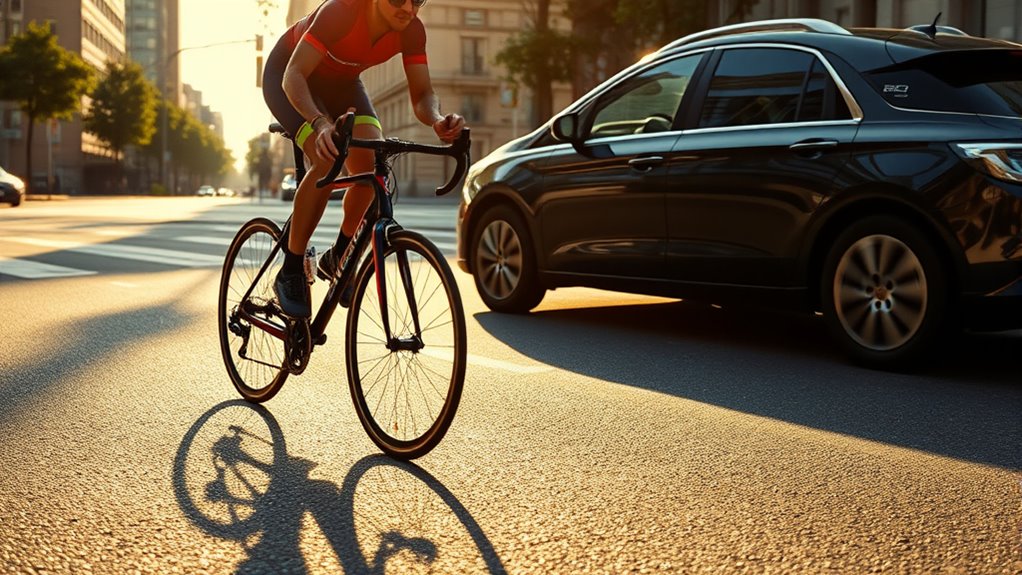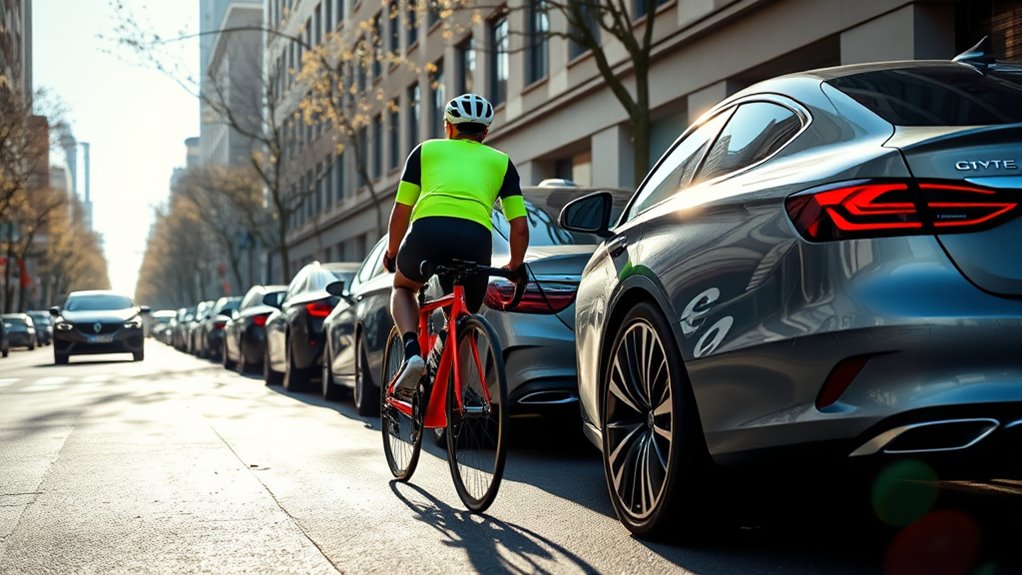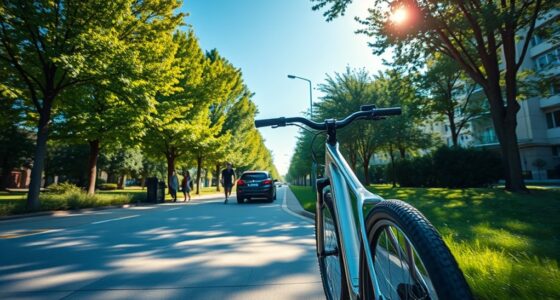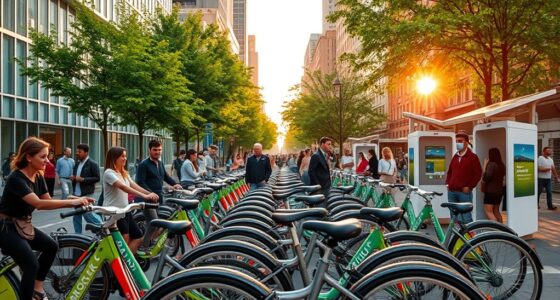When you compare cycling to driving, cycling produces zero emissions, which means no greenhouse gases or air pollution. On the other hand, cars release significant amounts of carbon dioxide, contributing to climate change and respiratory issues. By switching to cycling, you drastically cut your personal carbon footprint and help improve urban air quality. Keep exploring how this simple switch can make a big environmental impact and benefit your health.
Key Takeaways
- Cycling produces zero emissions, significantly reducing personal carbon footprint compared to driving.
- Cars emit greenhouse gases like CO2, contributing to climate change and urban air pollution.
- Transitioning from driving to cycling can lower overall transportation-related carbon emissions.
- The environmental benefits of cycling support urban air quality and public health goals.
- Infrastructure that promotes cycling encourages sustainable transport and further reduces carbon impact.

When you weigh the environmental impact, cycling clearly emerges as the more eco-friendly option. Bikes produce zero emissions, making them an ideal choice if you’re committed to reducing your carbon footprint. In contrast, cars emit greenhouse gases that contribute to climate change and air pollution, which are linked to respiratory problems and other health issues. By switching to cycling, you’re not just cutting down on personal transportation costs—you’re also helping to decrease pollution levels in your city. This collective shift can lead to cleaner air, quieter streets, and a healthier environment for everyone. If your goal is to minimize your carbon footprint and support sustainable urban development, cycling is a straightforward, effective way to do it. It’s a simple choice that aligns your daily habits with broader environmental goals, making a tangible difference in your community and the planet. Additionally, urban infrastructure plays a critical role in supporting eco-friendly transportation options like cycling.
Frequently Asked Questions
How Does Cycling Impact Local Air Quality Compared to Driving?
Cycling markedly improves local air quality compared to driving. By choosing to pedal, you contribute to pollution reduction and experience air quality benefits firsthand. Bikes produce no emissions, so they don’t contribute to harmful pollutants like nitrogen oxides or particulate matter. Your decision to bike instead of drive helps lower local air pollution levels, making your community healthier and cleaner for everyone.
What Are the Safety Considerations When Choosing Cycling Over Driving?
When choosing cycling over driving, you need to prioritize safety by wearing appropriate safety gear like helmets, reflective clothing, and lights. Always follow traffic rules, stay alert, and communicate with drivers and pedestrians. Be cautious at intersections, and avoid busy or poorly-lit areas if possible. These precautions help protect you and make a safer cycling experience while reducing your environmental impact.
How Do Weather Conditions Affect the Carbon Savings of Cycling?
Imagine you’re cycling to work on a rainy day; weather variability and seasonal effects can reduce your carbon savings. Wet, cold, or windy conditions make cycling less appealing, leading you to opt for driving instead. These weather changes can increase your carbon footprint, as driving emits more CO2. So, while cycling is eco-friendly, weather fluctuations remind you to take into account seasonal effects and plan your trips accordingly for maximum carbon savings.
Can Cycling Be a Viable Option for Long-Distance Commuting?
Yes, cycling can be a viable option for long-distance commuting if you have access to proper cycling infrastructure and are prepared for long-distance cycling. Investing in dedicated lanes and safe routes makes it more practical and enjoyable. While it may require more effort and planning, cycling offers significant carbon savings and health benefits, making it a sustainable alternative for your daily commute, especially over longer distances.
What Infrastructure Improvements Are Needed to Promote Cycling Over Driving?
You need a cycling revolution! Expand bike lanes dramatically and add traffic calming measures everywhere—imagine streets so safe, even a toddler could bike freely. More bike lane expansion means smoother, safer routes, while traffic calming minimizes reckless driving and makes cycling appealing. Together, these improvements transform your city into a cyclist’s paradise, encouraging more people to choose biking over driving and profoundly cutting down pollution and congestion.
Conclusion
So, next time you choose between cycling and driving, remember the power you hold. You can reduce emissions, boost your health, and clear the air. You can pedal your way to a cleaner planet, or drive and add to the pollution. You can embrace change, make a difference, and inspire others. Your choice shapes the future—choose cycling for a healthier, greener world, and watch how your actions create ripples of positive change.









